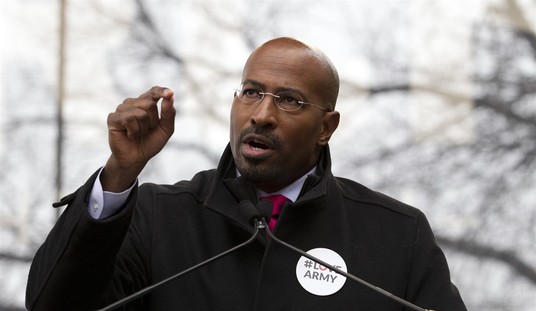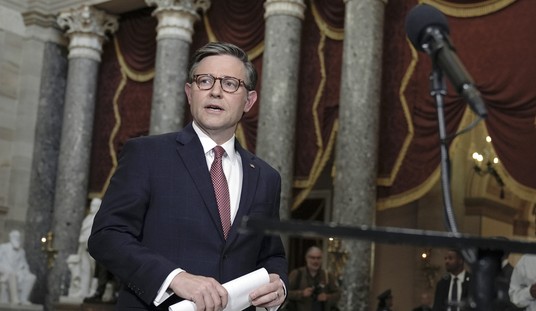Over the next 10 years health reform will impose upon us about $1 trillion in new taxes and it will take another $716 billion out of Medicare, imperiling access to care for the elderly and the disabled according to Medicare's Office of the Actuaries.
It will impose a mandate to buy health insurance on most people and fine us if we don't comply. It will compel all but the smallest employers to provide insurance to their employees and fine them if they don't. Since economic theory teaches that workers pay for health benefits with lower wages and fewer non-health benefits, the extra burden will fall hard on middle-income families.
The federal government will regulate the kind of insurance we must have, tell us where we must get it and regulate how much we pay for it as well.
Many will ask, "What are we getting in return for all this?" I would like to turn that question around. After doing all these things, "What problems will be left unsolved?
Costs. Need I even discuss this? I really don't know of anyone not on the White House payroll who today is seriously claiming that costs will be lower because of the Affordable Care Act. And even the White House is now backing away from the claim. As reported in last Saturday's New York Times:
[T]his week the administration cautioned officials to be careful about suggesting that the law would drive down costs.After extensive research, the administration said it was unwise to tell consumers that they could get "health insurance that fits your budget." That message, it said, is "seen as highly motivational, but not as believable."
Quality. On the very same day, the Times also delivered a stunning blow on the quality front as well. An Institute of Medicine study, requested by the Obama administration, debunked the administration's notion that
Medicare should pay higher levels of reimbursement to areas of the country that deliver measurably good care at low cost and less to regions where costs are high and outcomes are poor…[T]he authors of the interim report found that there was too much variation within a region to justify a payment policy aimed at all the hospitals and doctors within the area. Just as there were efficient providers in high-cost areas, there were inefficient ones in low-cost areas.
Recommended
Yet there is no reason to be hopeful at the hospital (or Accountable Care Organization level) either. As reported here last week, the administration has been spending millions of dollars on pilot programs and demonstration projects for the purpose of discovering how low-cost, high-quality care can be delivered. Yet three Congressional Budget Office reports (see here, here and here) have found that these programs are not working.
Access to Care. Surely ObamaCare will deliver on this front, you might be thinking. That's what Mitt Romney thought. Health reform in Massachusetts cut the number of uninsured in half. But nothing in the Massachusetts legislation created any new doctors, any new nurses or any new clinics. Although some academic studies have found a small, but measurable boost in utilization among the poor, my general impression is that most people in Massachusetts are not getting any more care than they did before health reform. Traffic to community health centers and hospital emergency rooms is as high or higher today than it was before the reform. In the meantime, the time price ofcare hasincreased almost everywhere. In fact, the wait to see a new doctor in Boston is now two months — the longest in the country.
Nationwide, we are about to greatly expand the demand for care and do next to nothing about supply.As the waiting times grow, health care will become less accessible for everybody — even rich people. The biggest access problems, however, will be faced by people in plans that pay below market. They will be pushed to the rear of the waiting lines. Who are they? The elderly and the disabled on Medicare, poor people on Medicaid, and (if the Massachusetts precedent is followed) people with subsidized insurance in the health insurance exchanges. These, of course, are the most vulnerable populations.
Transparency. Courtesy of Time Magazine and CNN, we reported on how hospital charges mounted to $474,000 for one family:
Nurses pricked the patient's finger for a glucose test 190 times. At $39 a pop that totaled $7,410. A breathing ventilator generated 32 separate bills, totaling $65,600. There were separate charges for the IV tube and for asking for a urine bottle.A box of tissues is a "mucus recovery system." A teddy bear is a "cough suppression device" and can cost between $128 and $200.
Remember those little white cups fast food restaurants give you for free to put ketchup in? In fact there are restaurants giving them away for free in the lobby areas of many hospitals. In the hospital room, however, these are billed as "oral administration fees" and for one patient they totaled $5,000.
Here was the big surprise for CNN: none of this changes under ObamaCare! The 30 million or so people who will remain uninsured will still have no idea what they will be charged when they enter a hospital and when they leave they will be asked to pay list prices. There will be no transparency for the insured either, even though their total bill will be lower because they are insured. Although patient cost sharing will be capped for those with insurance, those caps don't apply to anyone who goes out of network (planning on taking a vacation?).
Portability. Polls consistently show that the biggest problem most people have with the health care system is lack of portability. Because our health care system is mainly employer-based, people are forced to change insurance when they change jobs. ObamaCare does nothing to change this. In fact, through the employer mandate, the health reform law tries to expand the extent of non-portable insurance.
A number of companies today are finding an escape route: Health Reimbursements Arrangements (HRAs). By using these accounts, employers can make pre-tax dollars available to employees to acquire insurance that they individually own. But Greg Scandlen has discovered that the Obama administration plans to outlaw the use of HRAs for this purpose beginning in 2014!
Dysfunctionality in the Small Group Market. In the individual market, insurance is guaranteed renewable. Once you buy into a health insurance pool, your premiums can only increase with the costs of the entire pool, regardless of changes in your personal health status. The small group market is different. Effectively, employers can only buy insurance for 12 months at a time. At the end of the year, they are removed from the pool, rerated and charged a new premium (to re-enter the pool) based on the new health status of their employees. This means that small groups cannot buy reasonable protection against the cost of cancer, heart disease and other costly conditions.
Almost all regulation of small group insurance is designed to deal with the consequences of this dysfunctionality, instead of correcting the core problem that created it. The Affordable Care Act continues in this tradition by imposing community rating on small group insurance — charging everyone the same premium, regardless of expected health care costs. This means that healthy groups will be overcharged so that unhealthy groups can be undercharged.
Healthy groups will be able to opt out of this arrangement, however, by self-insuring. They will buy "stop loss" insurance to cover unexpected large expenses and pay small expenses directly, say, through Health Savings Accounts. Why this is attractive is that the premiums for stop loss insurance will not be community rated. Instead they will reflect the true market price for insuring the risk.
By self-insuring, every healthy small group will be able to leave the community rated pool and lower its health insurance costs. But as they leave, the premium charged to those who remain will rise. We could see a classic "death spiral." Even if things don't get quite that bad, we are likely to see small employers abandoning health insurance altogether.
Far from solving the problems of the small group market, ObamaCare will likely make them worse.
Irrational Insurance Design.The single worst feature of Medicare and of most private insurance is the tendency to provide coverage for inexpensive services that people can easily afford on their own, while leaving them exposed to tens of thousands of dollars of out of pocket costs if a true medical catastrophe occurs.
The reason for this practice in the private sector is economics. As I explained in my book Priceless, employers cannot legally discriminate against employees and potential employees based on health status. What they cannot do directly, however, they can do indirectly by offering health plans that appeal to the healthy and repel the sick.
The reason for the practice in Medicare is politics. Politicians all over the world face strong incentives to overprovide to the healthy (because there are so many of them) and underprovide to the sick (because they are few in number and, in any event, may not be able to vote).
Instead of correcting these tendencies, ObamaCare compounds them. As I wrote previously:
[Note] the millions of dollars the administration has spent on Andy Griffith TV commercials and on other propaganda, telling senior voters about their right to a "free annual checkup" and encouraging them to go get it!Turns out what is being billed as a “free medical checkup” and a “physical” is actually a "wellness exam."
…Yet where in all the medical literature is there any evidence whatsoever that "wellness exams" for otherwise healthy people are cost effective? There isn't any.
Then there is a long list of preventive services that people will have covered, with no deductible or copayment. Again, from a previous post:
Health economists have known for a long time that preventive medicine does not save money, except in a few cases. The money that is saved, say, by early cancer detection in a patient who has cancer is overwhelmed by the costs of screening tens of thousands of people who don't have cancer.
In celebration of the third anniversary of ObamaCare, Health and Human Services Secretary Kathleen Sebelius announced that,
The Affordable Care Act gave those who reached the donut hole in 2010 a one-time $250 check, then began phasing in discounts and coverage for brand-name and generic prescription drugs beginning in 2011.
One suspects that the elderly would gladly forgo the $250 and the minor discounts for genuine catastrophic care.
Meanwhile, the most exciting developments in medical science are opening up the prospects of "personalized medicine." Although the techniques can be expensive, this is the frontier where discoveries may save your life. Yet, former White House adviser Zeke Emanuel has declared personalized medicine "a myth," and even if it's not a myth, he says, we can't afford it.
Pre-Existing Conditions. This is the only area I can identify where ObamaCare really solved a problem and it was done the right way — with federal risk pools. About 107,000 people have enrolled and enrollment has grown slowly, perhaps because the later enrollees dropped or avoided more expensive options that were open to them.
The administration has now closed enrollment. But why? Remember, pre-existing conditions was THE REASON virtually every Democrat spokesman gave for favoring the Affordable Care Act on the eve of its passage.
For $5 billion we are solving a problem the right way that is going to cost us $2 trillion trying to solve it the wrong way.
Go figure.
























Join the conversation as a VIP Member